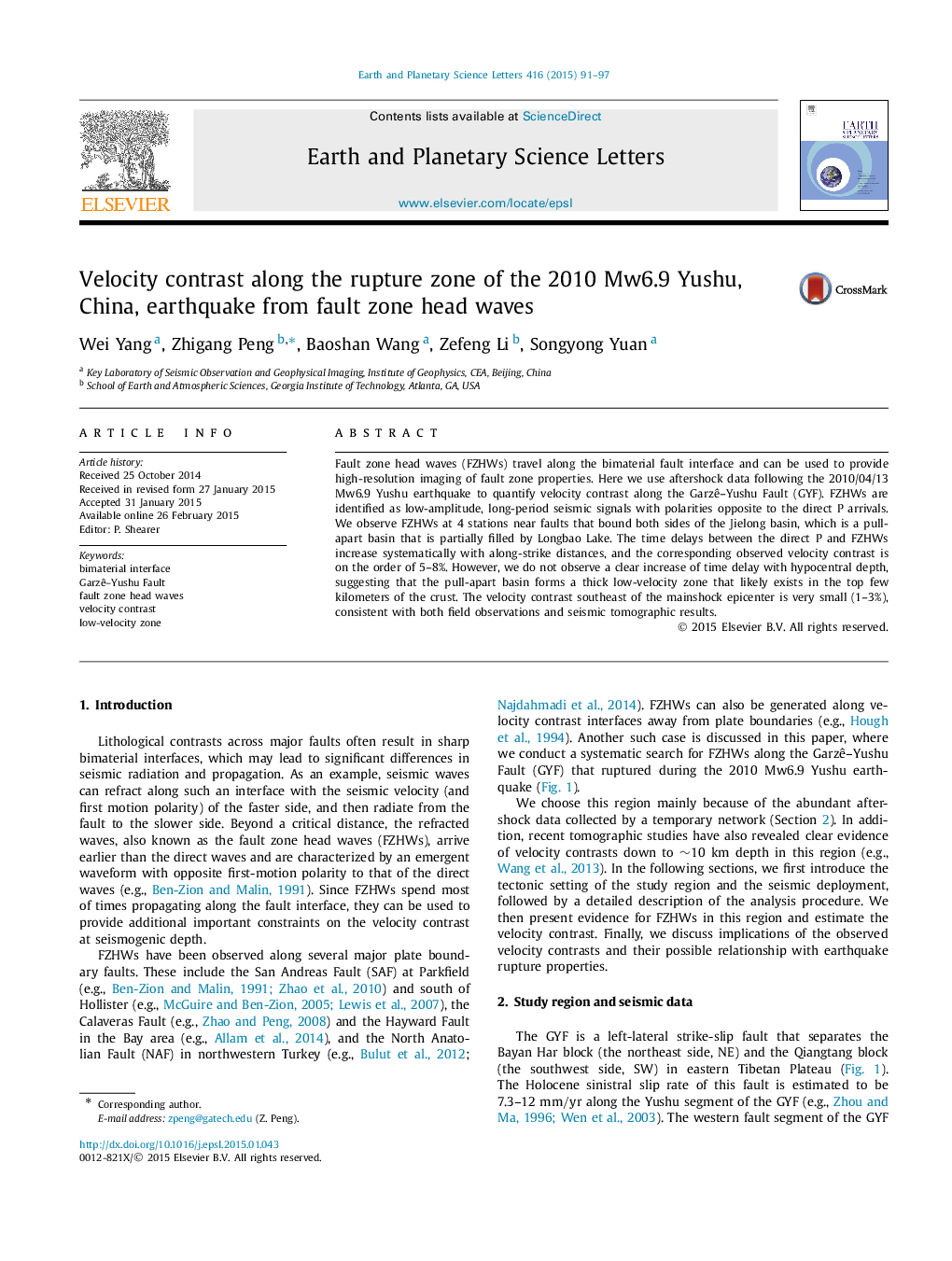| Article ID | Journal | Published Year | Pages | File Type |
|---|---|---|---|---|
| 6428526 | Earth and Planetary Science Letters | 2015 | 7 Pages |
â¢First observation of fault zone head waves in diffuse plate boundary regions.â¢Clear fault zone head waves observed on both sides of faults.â¢Possible evidence of a low-velocity zone with two bimaterial interfaces.
Fault zone head waves (FZHWs) travel along the bimaterial fault interface and can be used to provide high-resolution imaging of fault zone properties. Here we use aftershock data following the 2010/04/13 Mw6.9 Yushu earthquake to quantify velocity contrast along the Garzê-Yushu Fault (GYF). FZHWs are identified as low-amplitude, long-period seismic signals with polarities opposite to the direct P arrivals. We observe FZHWs at 4 stations near faults that bound both sides of the Jielong basin, which is a pull-apart basin that is partially filled by Longbao Lake. The time delays between the direct P and FZHWs increase systematically with along-strike distances, and the corresponding observed velocity contrast is on the order of 5-8%. However, we do not observe a clear increase of time delay with hypocentral depth, suggesting that the pull-apart basin forms a thick low-velocity zone that likely exists in the top few kilometers of the crust. The velocity contrast southeast of the mainshock epicenter is very small (1-3%), consistent with both field observations and seismic tomographic results.
